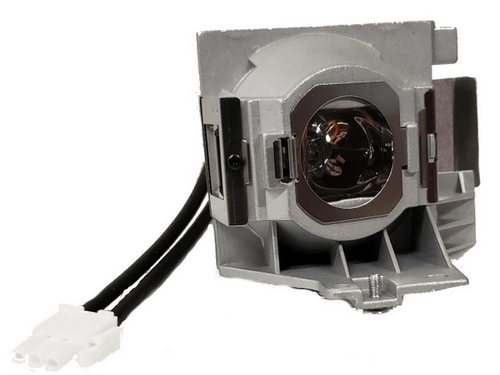After watching Season 8 Episode 3 of the HBO Game of Thrones on my Optoma TH1060, it inspired a question that seems relevant. Is my lamp bright enough to watch videos or is it time to install a new lamp?
My lamp is still coming on so why would I consider replacing it before it actually fails?
Unlike many other types of lamps, a projector lamp will slowly dim as it ages. This is due to the type of technology used to make the lamp function. As I have described in other blogs, these use a ‘Short Arc Mercury Vapor’ technology. In normal people speak, this means there is no filament(small wire that glows to make light). Rather there are two small pieces of tungsten that sustain a small yet powerful spark between the two points. Those points are encased in a small glass tube that you see in the middle of your bulb.
When you sustain a spark, it is called an Arc. hey..that rhymes…
Normally an arc is not going to give off white light. It will be a mix of blue, white, lots of ultraviolet and Infrared light. This sort of light will not make a good picture. It will ruin optics and possibly your eyesight.
To get a more color correct picture, there is a mix of gasses inside that little arc tube. Using a minuscule amount of mercury metal as well as some other gasses, the heat of the arc makes that gas mixture glow with a bright white light with some UV and IR emissions. The UV is blocked by the glass of the lamp lens. The IR is blocked by either an IR block coating on the lamp lens itself (most DLP) or on a built in piece of glass in the projector( most LCD). If the IR is not blocked, it can heat up the components inside the optical path. They will melt or burn and ruin the projector. Fortunately every lamp we sell has its coating checked. That means the only thing left to watch out for is when the tungsten arc points inside the arc tube start to wear apart too far.
On average the tungsten electrodes are 0.8-1.3mm apart. This varies per bulb, per model of bulb or bulb size. On the bulb you will sometimes see this arc gap measurement in the part number. For instance the 280W bulb in my BL-FP280E shows an arc gap of 1.0mm. That gap will grow as the bulb is used. The tungsten starts to wear. Once the arc gap is wide enough, the bulb may not light when asked to. It also may flicker as the arc cannot be held uniformly due to the tungsten points becoming uneven with use.
This is where the lamp life estimations come from. Manufactures measure the light output of their projector until the output drops to a certain level. That level will vary of course and is not published. No matter. The point of this time limit is to make sure you are not trying to see a picture that should be bright enough but isn’t. I have heard claims that they set these time limits to ensure more lamps are sold. That might be partly true but in reality the lamps do lose their original brightness as they age. There are some symptoms to look for that will tell you if the lamp is wearing out besides the brightness. Because really, if you watch it often enough, you will not notice the lamp dim. It happens so slowly over such a long period that it is almost not noticeable. At least until you put the new lamp in and exclaim, “WOW! That is WAY brighter!”.
The first symptom is the lamp taking longer to come on. The lamp should reach full brightness pretty quickly. If the lamp seems like it is taking a few minutes rather than less than a minute to get bright, it might be wearing out.
Another is if the lamp seems to be ‘flickering’. I say flickering in a light-to-dark sense rather than colors flickering around. That is something else entirely for another blog post. The light-to-dark flickering is mostly the arc starting and stopping and then restarting again very quickly. Another cause is the arc ‘walking’ around the arc points. It will leave its optimum position and this will be obvious by the image getting dim and then bright again in less than a second.
More common than you would expect would be the appearance of specs of dust in image. You would think any amount of dust would appear but these projectors are designed to be able to work properly with a moderate amount of dust. This is even true with dust directly on the DLP chip in a DLP or on the LCD panels of an LCD projector. Dust is inevitable in a normal install situation. Manufacturers know that and design the light path to work “around” it. I say “around” because the a new or not highly used lamp will output enough light to flood out the dust so that it is not affecting the image at all. The light is so bright that the dust is invisible in the image.
When a lamp is nearing the end of its life, the light output has dropped to the point to where you may notice bits of dust causing spots on the screen that weren’t there before. While a good cleaning is good to do seasonally, no amount of cleaning will get rid of all dust. There will always be a little. Replacing the lamp with a new lamp should bring back the brightness so that the small amounts of inevitable dust will not show up anymore. This is always my first go-to when I hear about dark spots or ‘water spots'(its been described that way to me). If the visible anomalies are still there after the lamp change, then its something else, but most of the time that is the solution.
Lastly look at the age of the lamp. Manufacturers have all sorts of life-span claims. The average is 2000-3000 hours of use. This isn’t a guarantee of course. There are many variables that come into play such as ambient temperature. How many times the lamp it started per day(schools tend to go through them well under the rates hours). Plus dust buildup inside(lack of cooling shortens lifespans of lamps). Check the lamp time of your unit. If you are 75-85% through the lamps life, the light output is much lower than it was. Keep in mind the old lamp can be a nice backup. Put that new lamp in and put the old one away for a spare.
These days, you can even download a light meter for your smart phone. Take a brightness reading(notice I do not say lumens, that is for another article). It’s arbitrary but that is OK as its for your projector only.
Then in a few months, measure it again using the same image. I prefer a white picture(YouTube has plenty of 10 hour white image vids). You can then start to get an idea of how fast or slow the lamp is wearing out. Once you get to 50% of the brightness it should be pretty obvious and you can put the next new lamp in.
Ideally purchased from us of course!
To break it down into an easy checklist, read below
- Is the lamp taking longer than a minute to get to full brightness?
- Is the lamp flickering light-to-dark?
- Do you see any visual anomalies in the picture that weren’t there a few months ago? Do they look like spots or dark circles?
- Does your light meter ap say the image is now 50% of the original brightness?
If your answer yes to any of those, click here, put in your model or lamp number and get a new lamp sent out today!
That way when we head back to Westeros for the rest of season 8 we can actually see what happens in Game of Thrones…

